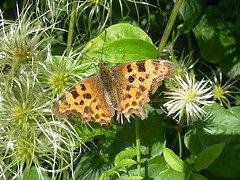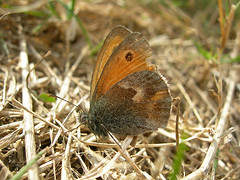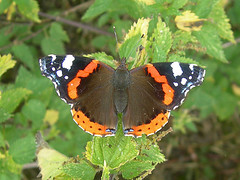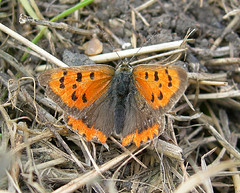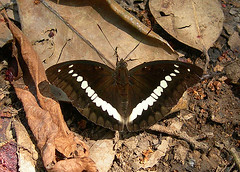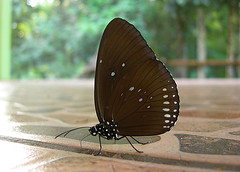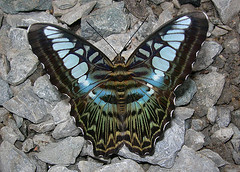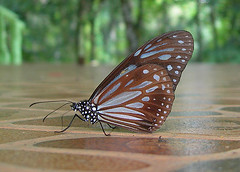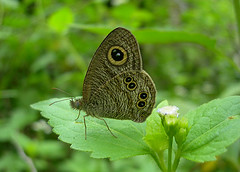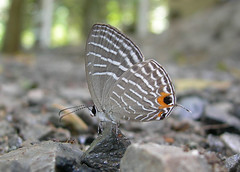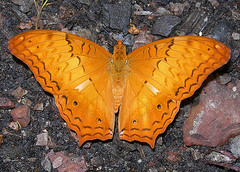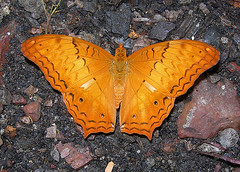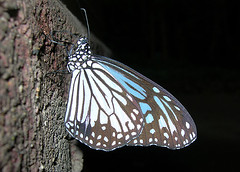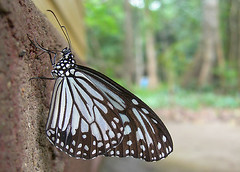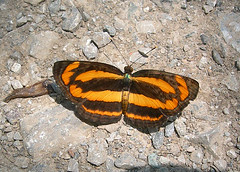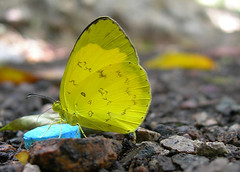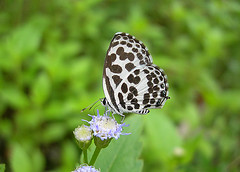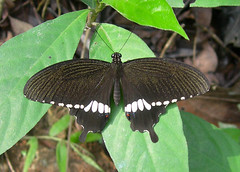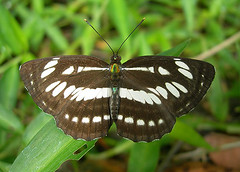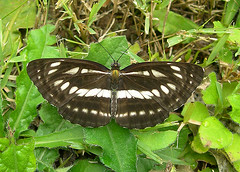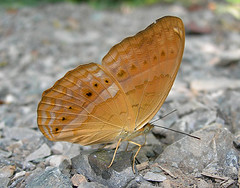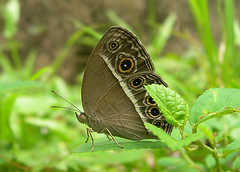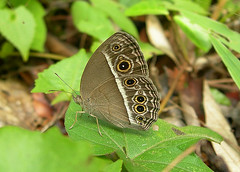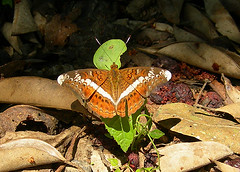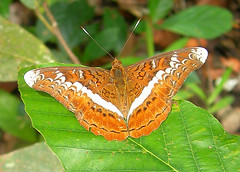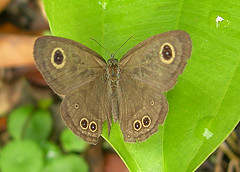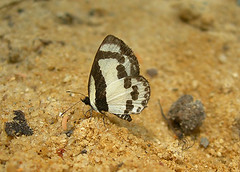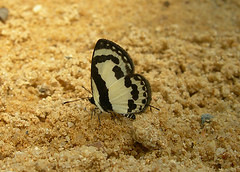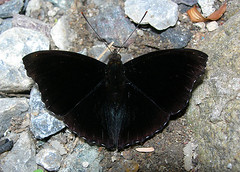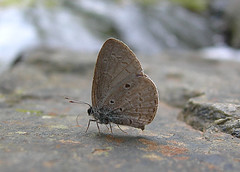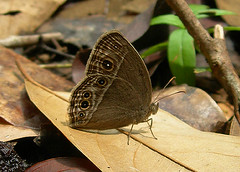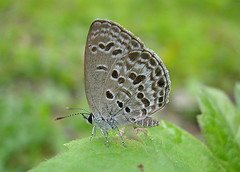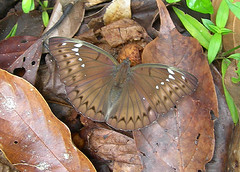I recently had a couple of visits to Chiang Saen in Chiang Rai province which proved very interesting for some unusual winter migrants. Chiang Saen is close to lots of wetland areas including Chiang Saen lake, Yonok wetlands and The Mekong but there are interesting areas all around to investigate.
Chiang Saen Lake
The lake is not quite the birding spot it once was with its permanently raised water levels there are few marginal areas for birds to feed in but there are still some good birds to be found. Some of the more regular birds included Pintail Snipe, Citrine Wagtail, Purple Swamphen, Grey-headed Lapwing, Lesser Whistling Duck, Spot-billed Duck and Dusky Warbler but on checking the duck flock I found some interesting species.
Observing the ducks here takes some time because the birds are at great distance. One has to wait until the ducks get close and/or find a secluded place to watch the birds from close to where they like to feed. After spending a lot of time I found the following species on 11th December: Mallard, Gadwall, Garganey, Baer’s Pochard, Tufted Duck, Ferruginous Pochard, Northern Pintail, Northern Shoveler, Eurasian Wigeon and Common Shelduck.
Baer’s Pochard is now is an endangered species and there was a male and female present. Mick Davies and Dowroong Danlamajak have been reporting a female Baer’s Pochard from the lake since late November and I saw the same pair again on the 21st December so they are obviously in the area for the winter.
Also on 11th December I saw a subadult Common Crane at Chiang Saen lake. As far as I am aware this is only the 3rd record for Thailand. I got a record shot of the bird.
Chiang Saen Lake
The lake is not quite the birding spot it once was with its permanently raised water levels there are few marginal areas for birds to feed in but there are still some good birds to be found. Some of the more regular birds included Pintail Snipe, Citrine Wagtail, Purple Swamphen, Grey-headed Lapwing, Lesser Whistling Duck, Spot-billed Duck and Dusky Warbler but on checking the duck flock I found some interesting species.
Observing the ducks here takes some time because the birds are at great distance. One has to wait until the ducks get close and/or find a secluded place to watch the birds from close to where they like to feed. After spending a lot of time I found the following species on 11th December: Mallard, Gadwall, Garganey, Baer’s Pochard, Tufted Duck, Ferruginous Pochard, Northern Pintail, Northern Shoveler, Eurasian Wigeon and Common Shelduck.
Baer’s Pochard is now is an endangered species and there was a male and female present. Mick Davies and Dowroong Danlamajak have been reporting a female Baer’s Pochard from the lake since late November and I saw the same pair again on the 21st December so they are obviously in the area for the winter.
Also on 11th December I saw a subadult Common Crane at Chiang Saen lake. As far as I am aware this is only the 3rd record for Thailand. I got a record shot of the bird.
Common Crane (Photo by Nick Upton)
Some other nice birds at the lake were 2 Siberian Rubythroats, Chestnut-tailed Starling and Red-throated Pipit.
On my second visit on 21st December I checked the ducks again and saw these: Mallard, Northern Shoveler, Baer’s Pochard, Common Teal, Garganey, Spot-billed Duck, Lesser Whistling Duck, Northern Pintail, Ferruginous Duck, Tufted Duck, Gadwall and 1 female Baikal Teal. This last bird is apparently only the second record for Thailand and I will submit a description and my field sketch to the Thai Record’s Comittee to see if it is accepted.
The Mekong
On 10th December to 12th December the water levels of the river were pretty high and very few birds were seen. We did see a female Peregrine and an Osprey on sand bars and 13 River Lapwings. Eventually a Long-billed Plover was found on some sand and gravel at the back of an old warehouse on the river. This spot can be found by heading towards the Golden Triangle from Chiang saen town. After a few kilometres there is this sort of white geodesic dome on the right. Enter here and go to the river where birds are foraging on mud, sand and gravel close to the river bank.
On 21st December the water levels were much reduced and many birds were feeding in the area described above. These included many Temminck’s Stints, many Little Ringed Plovers, a few Kentish Plovers, 17 River Lapwings, 2 Common Snipe, 2 Long-billed Plovers, a few Long-toed Stints, a few Common Greenshank, 12 Spotted Redshank, 10+Citrine Wagtails and many White Wagtails. For me the most interesting bird was a Common Ringed Plover which I spotted because of its bright orange legs. Whilst this is a common bird in Europe there are very few records in Thailand.
Yonok
This area has some good birds and interesting areas to investigate. At one of the harrier roosts 60-70 birds came in on 10th and 11th December, mostly male Pied Harriers but good numbers of Eastern Marsh Harriers and 1 male Western Marsh Harrier.
Only 1 Small Pratincole was seen on the Mekong but at Yonok there were a few resting on mud and hundreds flying around at dusk.
Close to Yonok on 12th December some burnt rice stubble produced some farmland species that apparently used to be common but are not now. This included 100s of Red-throated Pipits and 1 Rosy Pipit. Alos many Yellow, White and Citrine Wagtails, Bluethroat, Oriental Skylark and 6 Chestnut-eared Buntings.
Other Birds
Chiang Saen has a lot to offer other than the sites I have mentioned. With so many rice fields and other wetlands other birds are waiting to be found.
I was told that a Chestnut-crowned Bush Warbler has recently been seen along with Falcated Duck. Mick Davies also has sensible sounding claims to Lesser Kestrel and Great Snipe in the last few months, both would be new for Thailand.
Both Grass Owl and River Tern have regularly been seen at Yonok over the last few years but I didn’t see them this time. The tern may have disappeared but the owls are still around, I just didn’t put any effort into looking for them.
On my second visit on 21st December I checked the ducks again and saw these: Mallard, Northern Shoveler, Baer’s Pochard, Common Teal, Garganey, Spot-billed Duck, Lesser Whistling Duck, Northern Pintail, Ferruginous Duck, Tufted Duck, Gadwall and 1 female Baikal Teal. This last bird is apparently only the second record for Thailand and I will submit a description and my field sketch to the Thai Record’s Comittee to see if it is accepted.
The Mekong
On 10th December to 12th December the water levels of the river were pretty high and very few birds were seen. We did see a female Peregrine and an Osprey on sand bars and 13 River Lapwings. Eventually a Long-billed Plover was found on some sand and gravel at the back of an old warehouse on the river. This spot can be found by heading towards the Golden Triangle from Chiang saen town. After a few kilometres there is this sort of white geodesic dome on the right. Enter here and go to the river where birds are foraging on mud, sand and gravel close to the river bank.
On 21st December the water levels were much reduced and many birds were feeding in the area described above. These included many Temminck’s Stints, many Little Ringed Plovers, a few Kentish Plovers, 17 River Lapwings, 2 Common Snipe, 2 Long-billed Plovers, a few Long-toed Stints, a few Common Greenshank, 12 Spotted Redshank, 10+Citrine Wagtails and many White Wagtails. For me the most interesting bird was a Common Ringed Plover which I spotted because of its bright orange legs. Whilst this is a common bird in Europe there are very few records in Thailand.
Yonok
This area has some good birds and interesting areas to investigate. At one of the harrier roosts 60-70 birds came in on 10th and 11th December, mostly male Pied Harriers but good numbers of Eastern Marsh Harriers and 1 male Western Marsh Harrier.
Only 1 Small Pratincole was seen on the Mekong but at Yonok there were a few resting on mud and hundreds flying around at dusk.
Close to Yonok on 12th December some burnt rice stubble produced some farmland species that apparently used to be common but are not now. This included 100s of Red-throated Pipits and 1 Rosy Pipit. Alos many Yellow, White and Citrine Wagtails, Bluethroat, Oriental Skylark and 6 Chestnut-eared Buntings.
Other Birds
Chiang Saen has a lot to offer other than the sites I have mentioned. With so many rice fields and other wetlands other birds are waiting to be found.
I was told that a Chestnut-crowned Bush Warbler has recently been seen along with Falcated Duck. Mick Davies also has sensible sounding claims to Lesser Kestrel and Great Snipe in the last few months, both would be new for Thailand.
Both Grass Owl and River Tern have regularly been seen at Yonok over the last few years but I didn’t see them this time. The tern may have disappeared but the owls are still around, I just didn’t put any effort into looking for them.






